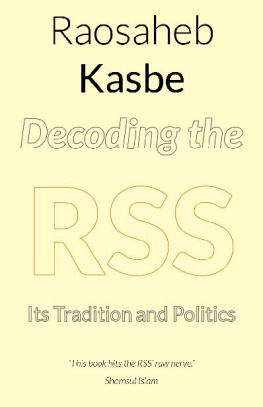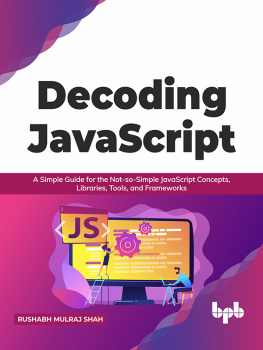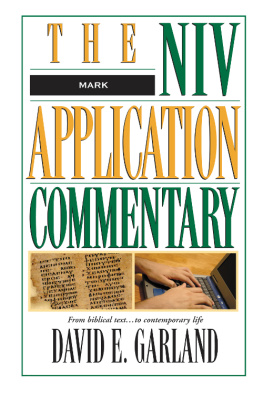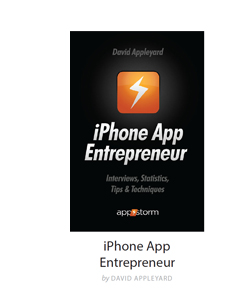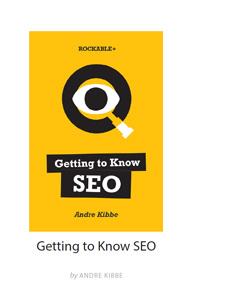About The Authors

Aaron Crabtree is the founder of Tap Dezign, an iOS and iBooks development company located in the Pacific Northwest. Aaron happily takes on the role of designer and developer in his projects as he carries 12+ years of graphic design experience. Aaron has been developing his passion for iOS programming since early 2009, and he has enjoyed watching iDevices evolve over the years.
Aaron lives in a small mountain town where he enjoys hiking, fishing, and taking in the sights with his wife and four boys. The best way to reach him is via Twitter (@aaron_crabtree).

Aron Bury is an avid mobile developer from Melbourne, Australia specializing in enterprise applications. He has always had a passion for developing innovative solutions to complex problems and fell in love with the iOS platform back in 2010. Since then it has been his mission to bring empowering and creative mobility solutions to enterprises.
You can reach Aron via Twitter ()

Akiel Khan has lived in the Middle East, the United Kingdom, and his birthplace, India. He would consider himself a researcher at heart, and is currently on hiatus from a Ph.D. program in computer vision and machine learning at a UK university. He enjoys writing code, especially for the iOS platform, and at the moment he is working toward finding his niche; ideally one that would allow him to work on solving interesting problems with computers.
Akiel is thankful for his family, who have remained supportive throughout life.
He can be reached by e-mail at .

Bart Jacobs runs Code Foundry (www.codefoundry.be), a mobile and web development company based in Belgium. One of the flagship products of Code Foundry is Ladybug (www.ladybugapp.com), an innovative bug and issue tracking solution for Mac and iOS developers. You can follow Bart on Twitter (@_bartjacobs) or read more about him on his personal website (www.bartjacobs.com).

Mark Hammonds is an entrepreneur and investor with an obsession for innovation. He is the co-founder of Mythic Code (www.mythiccode.com) and has provided consulting services to multi-billion dollar companies as well as government organizations. In addition to his entrepreneurial pursuits, he is the managing editor of Mobiletuts+, a software development blog in the Tuts+ network that focuses on all things Android, iOS, and mobile.
Mark lives in Tampa, FL, and spends his offline time kayaking in the Gulf of Mexico, striking up conversations over a cup of coffee or tea, or improvising on guitar and piano as a self taught musician.


Rockablepress.com
Envato.com
Rockable Press 2013
All rights reserved. No part of this publication may be reproduced or redistributed in any form without the prior written permission of the publishers.


Contents
Chapter 1:
iOS 6 SDK Essentials
Author: Mark Hammonds

This chapter will provide a whirlwind tour of the iOS 6 SDK. You will be introduced to the most essential changes and updates, as well as the most exciting new frameworks. Along the way, Ill also teach you how to build a Universal app designed for the iPhone 5, the iPad mini, and the iPad 3!
Theoretical Overview
The iOS 6 SDK introduces many new changes to existing frameworks and APIs, as well as completely new and exciting features. With so many changes to the SDK, covering all of them is well beyond the scope of any single chapter. Instead, this chapter will focus exclusively on the essential pieces of information you need to know to keep your skills sharp.
New Hardware Released in 2012
Device | Display Size | Resolution | PPI | Aspect Ratio |
|---|
| iPhone | 3.5 Diag. | 320 480 px | 163 PPI | 3:2 |
| iPhone 3G | 3.5 Diag. | 320 480 px | 163 PPI | 3:2 |
| iPhone 3GS | 3.5 Diag. | 320 480 px | 163 PPI | 3:2 |
| iPhone 4 | 3.5 Diag. | 640 960 px | 326 PPI | 3:2 |
| iPhone 4S | 3.5 Diag. | 640 960 px | 326 PPI | 3:2 |
| iPhone 5 | 4 Diag. | 640 1136 px | 326 PPI | 16:9 |
| iPad | 9.7 Diag. | 768 1024 px | 132 PPI | 4:3 |
| iPad (2nd Gen.) | 9.7 Diag. | 768 1024 px | 132 PPI | 4:3 |
| iPad (3rd Gen.) | 9.7 Diag. | 1536 2048 px | 264 PPI | 4:3 |
| iPad mini | 7.9 Diag. | 768 1024 px | 163 PPI | 4:3 |
Table 1: iPhone and iPad tech specs; hardware introduced in 2012 highlighted
As a developer, its important to understand the hardware your apps will run on. In this section, Ill briefly review the new hardware released by Apple in 2012.
The iPhone 5
Released on September 21st, 2012, the iPhone 5 is an impressive piece of engineering. Weighing in at just 4.0 ounces, the device sports a 1.3 GHz dual-core Apple A6 processor, 1GB of LPDDR2 DRAM, up to 64 GB of flash storage, and a retina display with a 4 diagonal and a 16:9 aspect ratio.

Figure 1
Reviewing the specs for the iPhone 5, the most important change for developers is the display. While the retina display has been available since the iPhone 4, every prior iPhone and iPod touch had a standard 3.5 diagonal, a 3:2 aspect ratio, and a screen resolution of either 320 480 (non-retina) or 640 960 (retina) pixels. This fact made it relatively simple to create interfaces that would look great across devices; we just had to double the dimensions. The new display features a 4 diagonal, 16:9 aspect ratio, and 640 1136 pixel resolution. Consequently, youll need to place more thought into the design and implementation of your apps UI in order to accommodate the additional vertical space.





